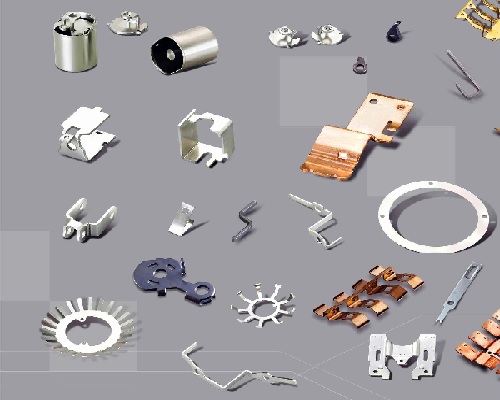Many electronic products available today incorporate components made through metal stamping. This method offers high precision and fast processing times, making it ideal for electrical stamping manufacturers. Below, you can see more about why choosing metal stamping for electronic components is very important.
Advantages of Metal Stamping for Electronic Components
Metal stamping offers several advantages, making it a valuable tool in this process. Below, you can see some advantages of metal stamping.
Speed and Efficiency
Metal stamping’s quick processing capability is a major advantage in an industry where time directly impacts profitability. Unlike traditional methods that may require several steps, the electrical stamping process is simple.
Manufacturers can form the electrical components just in a single press. This rapid production speed is ideal for meeting fluctuating market demands, allowing manufacturers to produce large batches quickly to keep supply in line with demand.
Labor Efficiency
Metal stamping also enhances labor efficiency. Automated stamping presses need minimal human input, reducing labor costs and ensuring consistent quality without the risk of human error.
For electronics, where precision is critical, this reliability is a significant advantage. Also, a custom electrical stamping option is available, allowing for customized solutions that meet specific design requirements.
Precision and Consistency
Metal stamping achieves high precision by using carefully crafted dies that produce components to exact standards. Consistency is crucial in electronics, where even minor variations can impact functionality.
Whether for connectors that require perfect fits or shields needing precise coverage, metal stamping delivers uniform, reliable parts every time.
Cost-Effectiveness
In the production of electronics, cost control is essential. Metal stamping helps to achieve this because it permits mass production, but at a cost per piece lower than most other manufacturing processes.
It minimizes waste and runs efficiently, so metal stamping is an affordable option for electronic components.
Key Applications
The versatility of metal stamping is highlighted by the various electronic components it produces. Some key applications include:
Connectors
These small components connect various parts of electronic devices. Precision stamping is used to ensure they fit perfectly and perform reliably.
Shields
Electrical stamping manufacturers create electromagnetic shields that safeguard sensitive electronic components from interference.
Terminals
As the endpoints of electrical connections, terminals require high precision. Stamping guarantees they are consistently manufactured to high-quality standards.
Lead Frames
Essential for semiconductor packaging, these frames feature intricate designs made possible by advanced stamping techniques.
Heat Sinks
Critical for dissipating heat in electronic devices, heat sinks are typically stamped from metals known for their excellent thermal conductivity.
From everyday electronics to sophisticated aerospace systems, metal stamping is essential to manufacture important components that people depend on daily.
Innovations in Stamping
As the electronic sector changes, so do the methods and technologies associated with stamping. Some notable changes are listed below.
-
High Speed Stamping
The development of high-speed stamping presses has revolutionized production, allowing electrical stamping manufacturers to create components at exceptional rates. This is particularly important for industries that prioritize rapid delivery to market.
-
Precision Micro-Stamping
As electronic devices become smaller and more compact, the demand for micro components is increasing. Precision micro-stamping techniques help manufacturers to produce very small components with high accuracy. This makes metal stamping an excellent choice for business that requires micro components.
-
Hybrid Stamping
This innovative method combines traditional stamping with techniques like forging. Hybrid stamping benefits from the advantages of both processes, resulting in components that exhibit enhanced strength without compromising on precision.
-
Smart Dies
The introduction of sensors and smart technology into stamping dies has transformed the production process. These smart dies to monitor the stamping operations in real-time, ensuring high quality and reducing downtime by predicting maintenance needs before issues arise.
Using these innovative techniques, metal stamping continues to play a vital role in producing electronic components, allowing manufacturers to adapt to the rapid changes in the industry.
Summing Up
Electronic components manufacturers use metal stamping because of its exceptional accuracy and dedication to quality assurance. As electronic devices become increasingly complex and their performance demands escalate, metal stamping plays a crucial role in promoting innovation.
For manufacturers in the electronics sector looking to optimize their production methods and deliver top-notch components, metal stamping provides a dependable solution that guarantees efficiency and quality.


